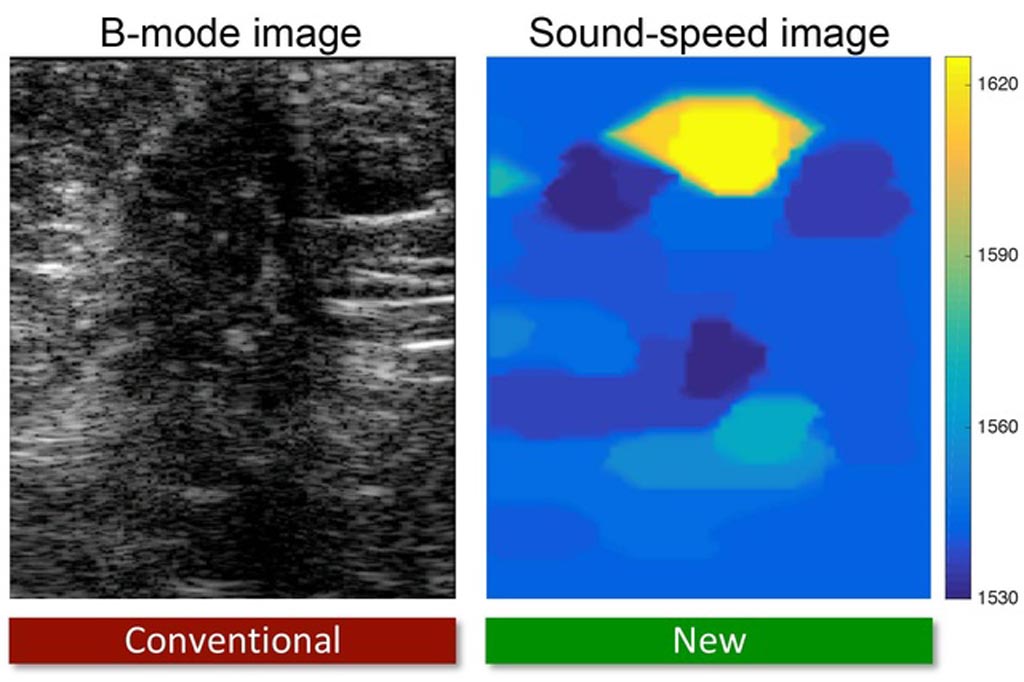Ultrasound Innovations Improve Breast Cancer Detection
By MedImaging International staff writers
Posted on 14 Nov 2018
A new ultrasound imaging method based on speed-of-sound (SoS) can help distinguish benign breast tumors from malignant ones.Posted on 14 Nov 2018
Developed by researchers at the Swiss Federal Institute of Technology (ETH; Zurich, Switzerland) and University Hospital Zürich (USZ; Switzerland), the new method relies on the principle that the density and rigidity of tissues determines the speed of the sound echo. Since tumors are more rigid than their surrounding tissue, sound travels 3% faster (on average) in malignant tissues than in healthy tissues, and 1.5% faster than in benign tumors. Image reconstruction strategy is based on measuring the differential time-of-flight measurements due to displacement of the ultrasound wave propagation paths.

Image: The new ultrasound technique shows a breast tumor in yellow (Photo courtesy of Orçun Göksel / ETH).
The method requires single-sided access to the tissue, and can be applied to conventional ultrasound equipment, and for a range of transducers and applications. In clinical trials involving breast cancer imaging, the proposed method successfully improved contrast ratio from 0.37 to 0.67 for even high noise levels (50%) during Fourier-domain reconstruction. The enhanced contrast images cannot only detect the presence of tumors, but can also aid in distinguishing benign tumors from malignant ones. The study was published on October 26, 2018, in Physics in Medicine and Biology.
“Ultrasound is successful because it is safe, portable and inexpensive. Our goal is to provide physicians with a better tool for decision-making during routine checks, and to avoid unnecessary biopsies,” said senior author Orçun Göksel, PhD, of ETH Zurich. “Our technology preserves these advantages while addressing the main limitation of conventional ultrasound, image quality, which is still a problem for diagnosis in many clinical cases. Compared with conventional ultrasound, our images are much easier to interpret.”
Related Links:
Swiss Federal Institute of Technology
University Hospital Zürich













